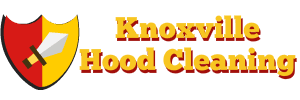Laconia Kitchen Exhaust Cleaning
Laconia Restaurant hood cleaning is vital to keeping the efficiency of your exhaust system high. I would like to talk about the hoods themselves in this article. The hood is designed to do two things:
- Act as a fire protection device by removing the grease
- Remove smoke and heat from cooking area below
The kitchen exhaust system is designed to pull grease laden smoke up into the hood and to the filters where it is filtered, turned back into grease then emptied into a catch tray. The three basic hood designs are the canopy, the galley and the downdraft. The closer the hood is to the cooking surface, the more efficient it is.
The most common type of hoods seen in restaurants today are canopy style. They are a simple design, do a good job and are easy to maintain. Restaurant hood cleaning is normally a simple task with these hoods. Just make sure that your hood cleaning company is cleaning the entire exhaust system and not the hood only.
Laconia [lsup_header_1034]
[lsup_random_image]
[lsup_random_article]
[lsup_random_image]
[lsup_random_header_2]
[lsup_random_article]
